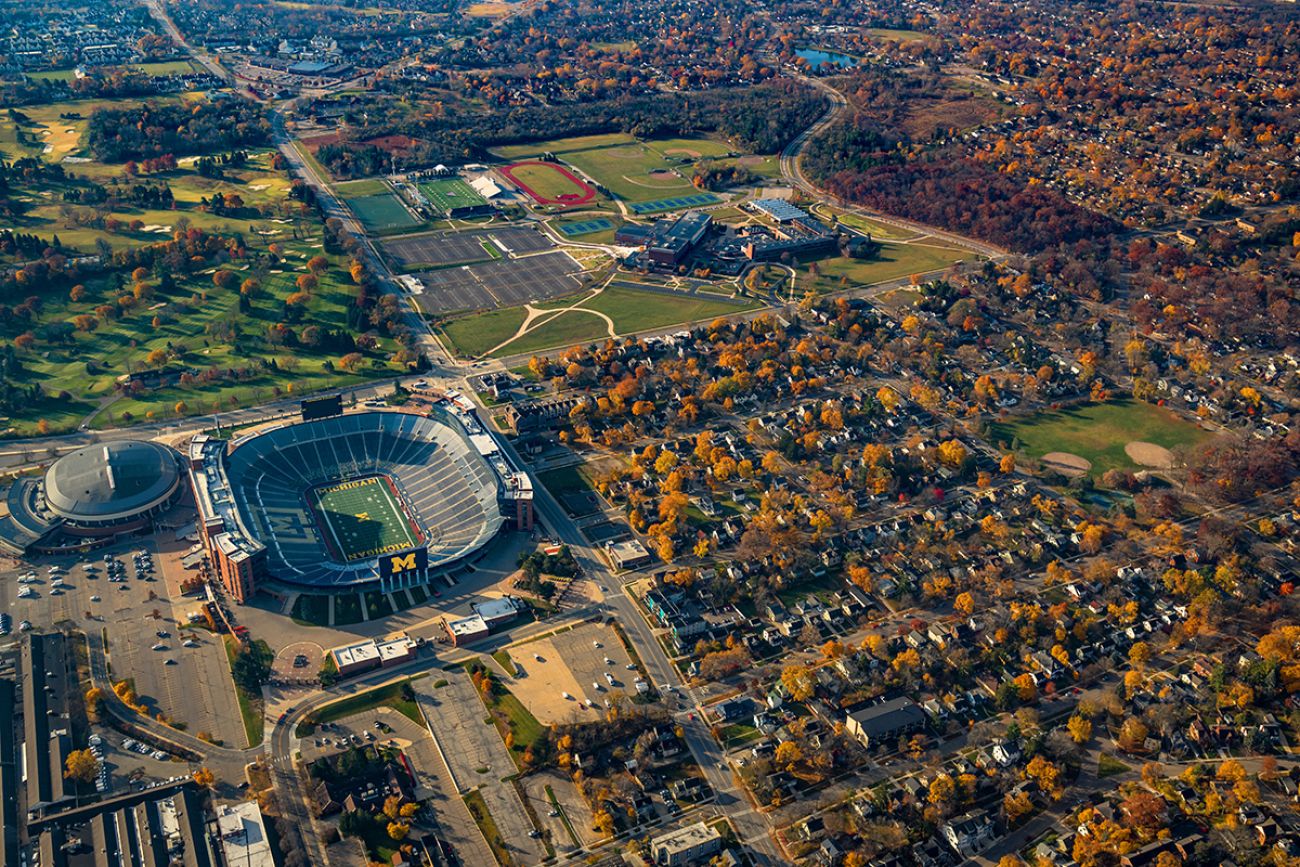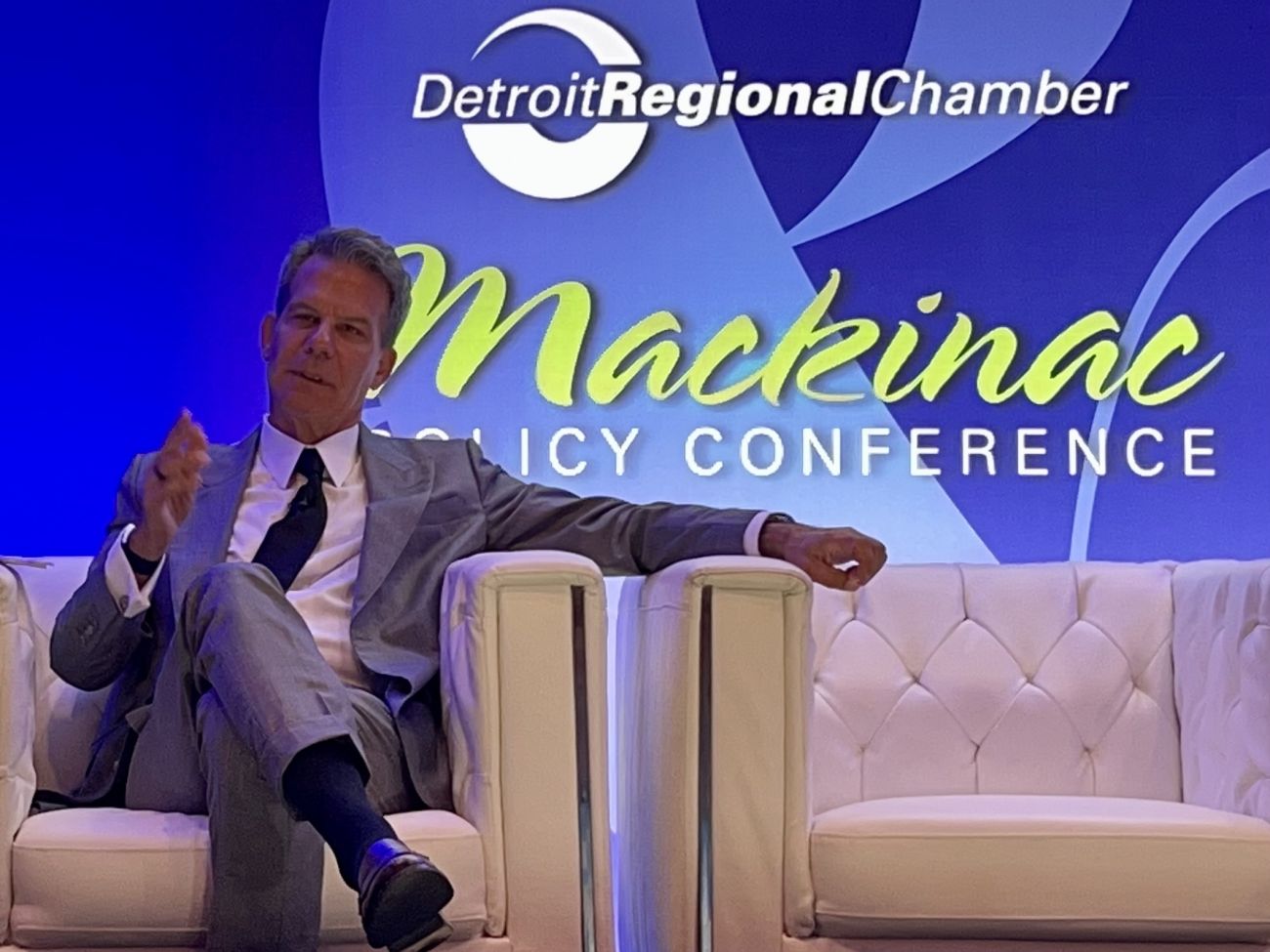Turning Ann Arbor into Austin and other tech recommendations for Michigan

- A study for Michigan’s auto industry points to tech and education solutions that also fit the state’s population goals
- Recommendations include boosting the state’s college towns, which study author Richard Florida calls ‘critical anchors’
- It also calls for a new task force to align education, municipalities and business in elevating knowledge-based jobs
Tools for strengthening Michigan’s auto industry parallel solutions for reversing Michigan’s population decline: keeping and attracting educated workers in key fields, while investing in the state’s most vibrant cities — notably, its college towns.
And in those towns, namely Ann Arbor, East Lansing and Detroit, a new report says, university research capacities should be aligned with technological advances in the automotive and other industries that will drive employment.
Each of the report’s recommendations should increase state population as they strengthen its increasingly tech-driven auto industry, said Richard Florida, a business professor at the University of Toronto and urbanist whose focus on what he labeled “the creative class” and downtowns has brought him broad acclaim and no shortage of critics in the past 20 years.
Related:
- What Michigan can learn from booming Columbus, Ohio
- Can Michigan defuse its population time bomb? See how far we fall short
- Michigan business leaders: ‘We’re a below-average state’ with no quick fix
- Gov. Whitmer plans group to tackle Michigan’s population crisis
- Michigan college enrollment decline among worst in the nation
Florida and researchers at his Creative Class Group compiled the report for MICHauto, a division of the Detroit Regional Chamber. MICHauto released the report Wednesday with a presentation by Florida at the chamber’s Mackinac Policy Conference.
The challenge is urgent, Florida said, because of massive transformation under way in the automotive sector, which expects overall investment of $1.2 trillion by 2030 on electrification and digitization.

The spending comes as technology drives the sector, creating workforce demand for roles like computer scientists and electrical engineers, workers who are concentrated in other states with larger, more vibrant tech hubs like California, New York City, Austin and Dallas.
At the same time, manufacturing jobs are declining, leaving Michigan fighting other states for a foothold in the talent rebalancing. Yet the state’s population is stagnant, with its workforce getting older.
“The only viable path for the future is to shift the state’s economy away from lower-paying manufacturing plants … and to leverage and build on the state’s assets and capabilities to compete for the higher-value-added, knowledge-based industries of the future,” the report said.
Among Florida’s findings is how Michigan’s legacy manufacturing, which is still a presence in the state, may distort the national changes toward a tech-based economy: For example, he said, just 8 percent of the U.S. workforce is employed in manufacturing, while 40 percent of the American workforce is made up of knowledge, professional, and creative workers.
At the same time, the report says, Michigan’s median wages are now about 10 percent below the U.S., while 40 years earlier they had been 20 percent higher.
“I think we all understand this is a big moment for the state,” Florida said.
Demanding greater change in the state’s most active cities, and investing more deliberately in its workforce can drive success, Florida told Bridge Michigan in an interview, because “the capacity is already here.”
As an example, Florida said, Michigan universities already focus on high-tech programs and research, both of which are essential to the so-called knowledge economy. Indeed, the report notes, the state’s University Research Corridor involving the University of Michigan, Michigan State University and Wayne State University already produce more talent than fabled academic clusters in and around Boston, San Francisco and the Research Triangle in North Carolina.
But there are also enormous challenges, including:
- While the state retains large chunks of college grads, it falls short in keeping graduates in key, in-demand majors in Michigan. For example, just a quarter of U-M graduates with computer-related majors work in the state five years after graduation, while 36 percent work on the West Coast.
- Michigan pays substantial lower wages and salaries than other states for in-demand tech workers. In 2022, the state ranked 19th in average wages for computer programmers.
- Michigan accounts for less than 1 percent of all U.S. venture capital investment.
The report also notes that for all of Ann Arbor’s and the University of Michigan’s success, the metro area’s growth pales when compared to Austin, Texas. Metro Austin has grown from about 400,000 residents in 1970 to 2.5 million today, while metro Ann Arbor grew from 230,000 to 370,000 over that same period.
College towns with university powerhouses like U-M and MSU “must become full-blown tech and talent hubs,” the report concludes.
The report recommends the state form a Michigan Economic Transformation Alliance with members from business, higher ed, labor and municipalities to address talent, placemaking and what he called transformational technology, including artificial intelligence, electrical power and batteries.
Richard Florida first gained prominence in 2002 with his book, “The Rise of the Creative Class,” which recognized the role of placemaking in economic development. Cities with vibrant arts communities attracted the young professionals employed in high-tech jobs, he wrote, in turn remaking the area’s economy with higher-paying jobs and a more highly-educated workforce.
However, backlash grew to the concept as gentrification followed, along with land speculation and rising prices that eroded the organic “cool” factor cities strove to emulate. Some critics wrote off his theory as elitist and said it contributed to income inequality.
Today, Florida operates the Creative Class Group as a global research firm focused on growth and prosperity.
The study was made possible through MICHAuto’s high-tech talent strategy, an effort that in December 2022 received $2 million from the state’s $25 million Mobility Future Initiative.
The funding paid for the study, while additional initiatives focusing on career paths in the auto industry, attracting high-skilled workers and setting up a plan for increasing tech clusters across the state.
One important point to Florida’s study is that changes made for Michigan’s automotive industry will affect far more than just carmakers, said Glenn Stevens, executive director of MICHauto.
Aligning statewide goals to increase education and talent, and make communities more vital also will affect “the mobility industry, the energy industry, the tech industry,” Stevens said. “They’re all intertwined. Michigan has a chance to be a leader … in new technology.”
The study is getting attention from lawmakers, including Gov. Gretchen Whitmer, Stevens said. Whitmer is expected to announce some population-focused initiatives for the state this week at the policy conference on Mackinac Island.
"We're going to put in first-ever mechanisms to make sure that there are people in commissions that are specifically focused on population growth,” Bobby Leddy, her spokesperson, told Bridge last week.
An effective statewide initiative needs to recognize that multiple systems across the state — universities, K-12 education, state policy, business advocacy — are making policy choices today that will dictate whether Michigan wins or loses, Florida said.
U-M is among the institutions willing to take a lead to “empower and energize the economy here,” U-M President Santa Ono told Bridge on Wednesday at the policy conference.
U-M, he said, “intends to really ramp up our interaction with companies and also with government officials to be actively involved in putting out a welcome mat for companies that want to locate here.”
Florida cautioned that Michigan “needs to have a hub city,” a dense metro region with an international airport.
While Grand Rapids is creating that on the west side of the state, growth in metro Detroit — along with Ann Arbor and the campus of the University of Michigan — needs to be prioritized for the state’s success, Florida said, describing universities as “critical anchors” for metros that are currently thriving, including places like Columbus, Ohio.
“People want to live in great places,” Florida said. “You need to have college towns which aren't just places to go to school (and move on).”
Business Watch
Covering the intersection of business and policy, and informing Michigan employers and workers on the long road back from coronavirus.
- About Business Watch
- Subscribe
- Share tips and questions with Bridge Business Editor Paula Gardner
Thanks to our Business Watch sponsors.
Support Bridge's nonprofit civic journalism. Donate today.
See what new members are saying about why they donated to Bridge Michigan:
- “In order for this information to be accurate and unbiased it must be underwritten by its readers, not by special interests.” - Larry S.
- “Not many other media sources report on the topics Bridge does.” - Susan B.
- “Your journalism is outstanding and rare these days.” - Mark S.
If you want to ensure the future of nonpartisan, nonprofit Michigan journalism, please become a member today. You, too, will be asked why you donated and maybe we'll feature your quote next time!




